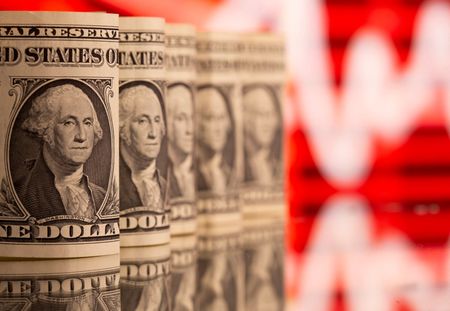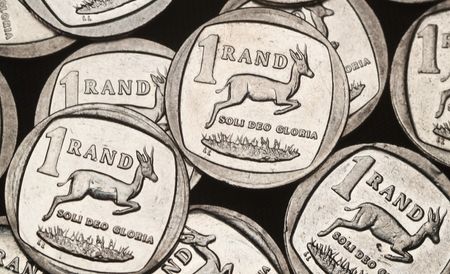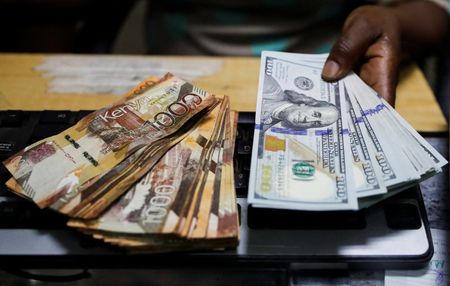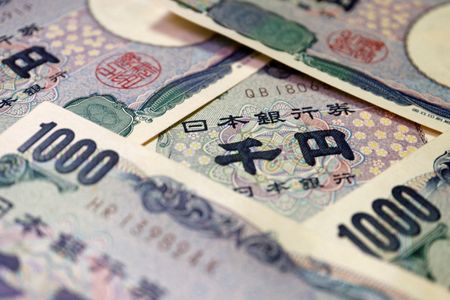By Amanda Cooper
LONDON (Reuters) – Wall Street futures fell and the dollar rose after data on Friday showed the U.S. economy generated fewer jobs than expected in January, but more than initially thought in December, leaving the outlook for rates more or less unchanged.
The Labor Department said the number of workers on nonfarm payrolls rose by 143,000 in January, below expectations for a rise of 170,000 and below December’s upwardly revised 307,000.
The employment report was distorted by annual benchmark revisions, new population weights and updates to the seasonal adjustment factors, the model the government uses to strip out seasonal fluctuations from the data.
Economists polled by Reuters had already offered a wide range of forecasts for January’s numbers, given the potential for distortion from cold weather across the country and the California wildfires.
Futures on the S&P 500 and the Nasdaq were down 0.1-0.2% after the data, having traded flat on the day earlier, while the dollar rose against a basket of currencies.
“The Fed’s recent choice to halt its cutting pattern and keep interest rates where they are was largely prompted by robustness in the labour market and sticky inflation, so the softening we have seen today may prick up central bankers’ ears,” Charles Schwab UK managing director Richard Flynn said.
“We expect that it would take a significant surprise from economic indicators for the Fed to consider deviating from its anticipated plateau, given ongoing uncertainty around the potential impact of upcoming policy changes from the new government administration on growth and inflation, so for now, a “wait-and-see” approach feels wise,” he said.
The Federal Reserve is keeping interest rates unchanged for now. Markets are pricing in 40.8 basis points’ worth of cuts this year, compared with 42.55 bps before the jobs data.
U.S. President Donald Trump’s trade tariffs pose a risk to consumer inflation at home, as companies would likely pass on those higher import costs to their customers, leaving the central bank less room to lower interest rates.
U.S. Treasury yields, which hit their highest in 14 months in January, have been tracking lower for the last four weeks. On Friday, they were 3 basis points higher on the day at 4.47%, compared with 4.44% before the data.
Gold held on to its gains to trade around $2,860 an ounce, roughly unchanged from where it was earlier in the day. The price hit a record high at $2,882 on February 5.
The euro dipped to $1.0367, down 0.16% on the day, from $1.0374 earlier and the Japanese yen, which neared a two-month high earlier in the day, strengthened modestly.
The currency has strengthened as the Bank of Japan gears up for at least one rate hike this year. Strong wage growth data this week has beefed up the chances of tighter monetary policy. The dollar was last up 0.31% at 151.91, down from around 152.045 before the employment figures.
(Reporting by Amanda Cooper; Editing by Hugh Lawson)










